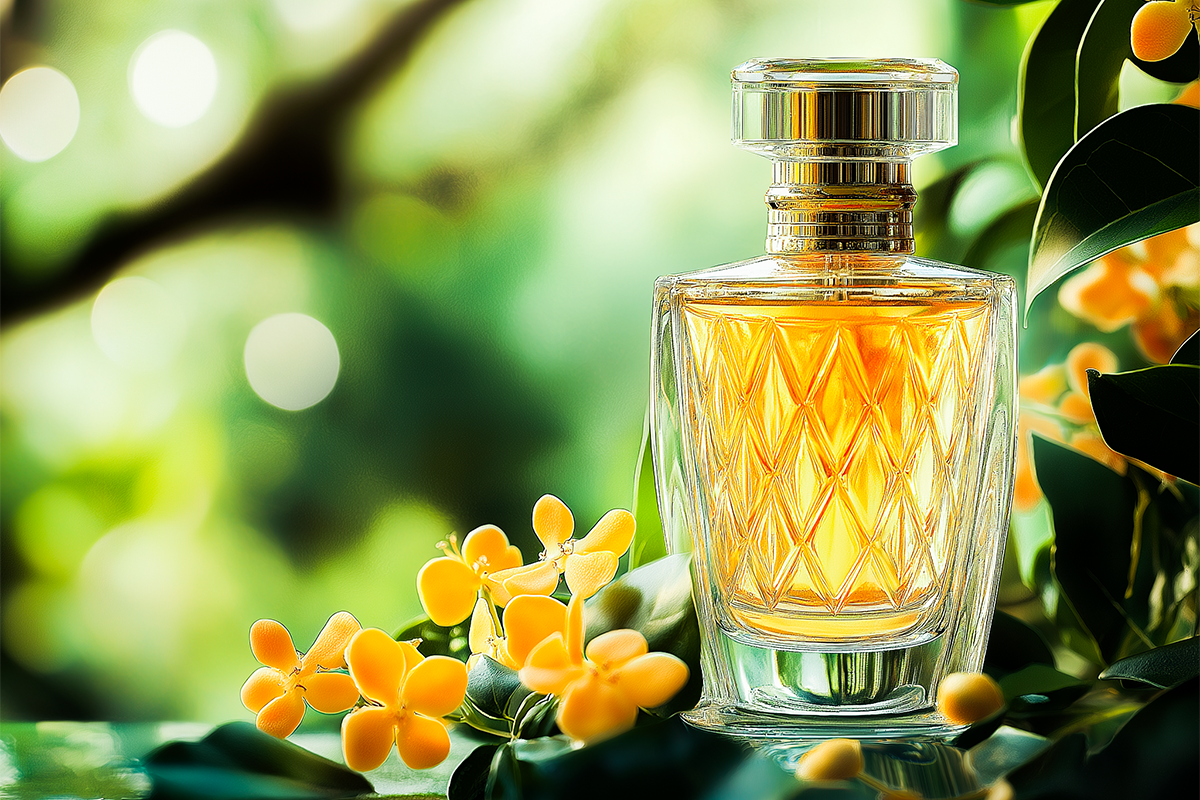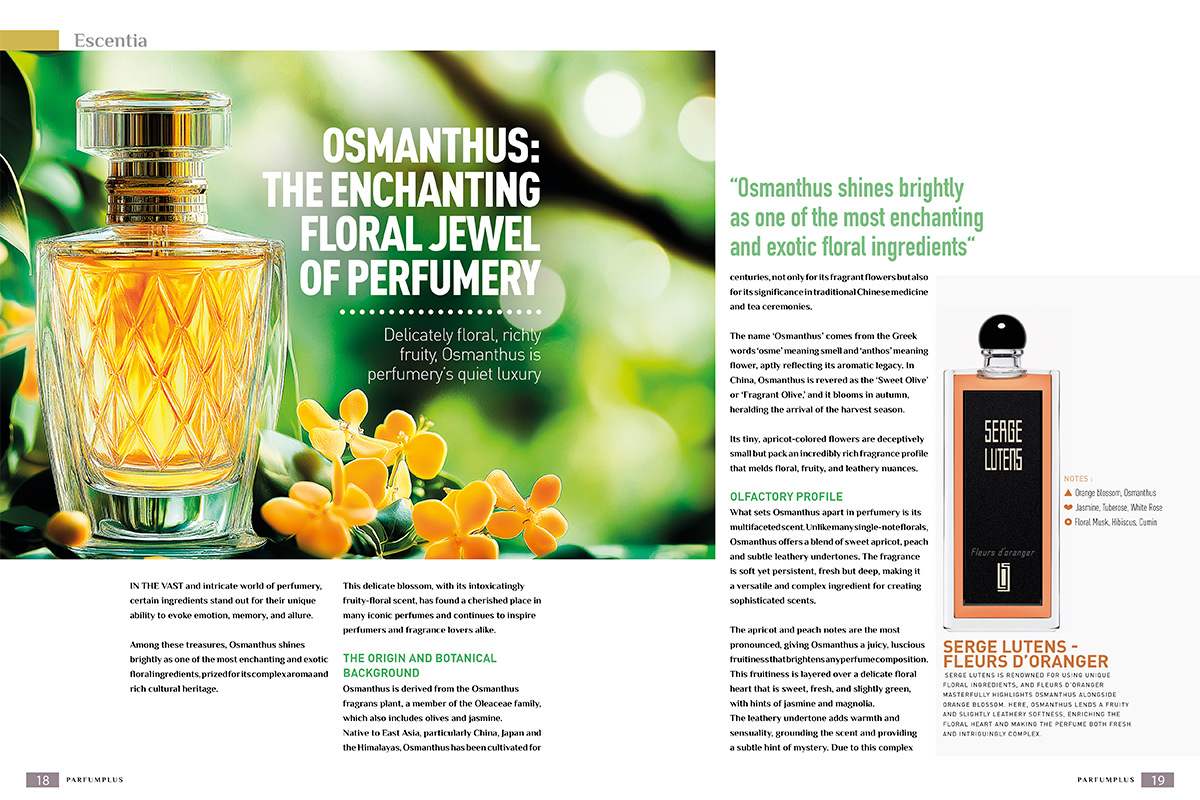Read this post in
 Arabic
Arabic

Osmanthus: The Enchanting Floral Jewel Of Perfumery
Delicately floral, richly fruity, Osmanthus is perfumery’s quiet luxury
In the vast and intricate world of perfumery, certain ingredients stand out for their unique ability to evoke emotion, memory, and allure.
Among these treasures, Osmanthus shines brightly as one of the most enchanting and exotic floral ingredients, prized for its complex aroma and rich cultural heritage.
This delicate blossom, with its intoxicatingly fruity-floral scent, has found a cherished place in many iconic perfumes and continues to inspire perfumers and fragrance lovers alike.
The Origin and Botanical Background
Osmanthus is derived from the Osmanthus fragrans plant, a member of the Oleaceae family, which also includes olives and jasmine.
Native to East Asia, particularly China, Japan and the Himalayas, Osmanthus has been cultivated for centuries, not only for its fragrant flowers but also for its significance in traditional Chinese medicine and tea ceremonies.
The name ‘Osmanthus’ comes from the Greek words ‘osme’ meaning smell and ‘anthos’ meaning flower, aptly reflecting its aromatic legacy. In China, Osmanthus is revered as the ‘Sweet Olive’ or ‘Fragrant Olive,’ and it blooms in autumn, heralding the arrival of the harvest season.
Its tiny, apricot-colored flowers are deceptively small but pack an incredibly rich fragrance profile that melds floral, fruity, and leathery nuances.
Olfactory Profile
What sets Osmanthus apart in perfumery is its multifaceted scent. Unlike many single-note florals, Osmanthus offers a blend of sweet apricot, peach and subtle leathery undertones. The fragrance is soft yet persistent, fresh but deep, making it a versatile and complex ingredient for creating sophisticated scents.
The apricot and peach notes are the most pronounced, giving Osmanthus a juicy, luscious fruitiness that brightens any perfume composition. This fruitiness is layered over a delicate floral heart that is sweet, fresh, and slightly green,
with hints of jasmine and magnolia.
The leathery undertone adds warmth and sensuality, grounding the scent and providing a subtle hint of mystery. Due to this complex profile, Osmanthus is often described as a bridge between floral and gourmand fragrances, bringing a natural sweetness without becoming sugary or overwhelming.
Osmanthus in Perfumery
Osmanthus has been appreciated in perfumery since ancient times in Asia, but its integration into Western fragrances is relatively recent, gaining significant popularity from the late 20th century onward. The ingredient’s exotic origin and captivating scent make it a favoured choice among niche and luxury perfume houses looking to add a distinctive edge to their compositions.
In modern perfumery, Osmanthus is often used as a heart note, enhancing floral bouquets or adding a luscious softness to woody and oriental bases. It pairs beautifully with ingredients like:
- Jasmine and rose make a classic floral bouquet.
- Sandalwood and cedar for a warm, woody depth.
- Vanilla and tonka bean to enhance its gourmand facets.
- Leather and musk for sensual sophistication.
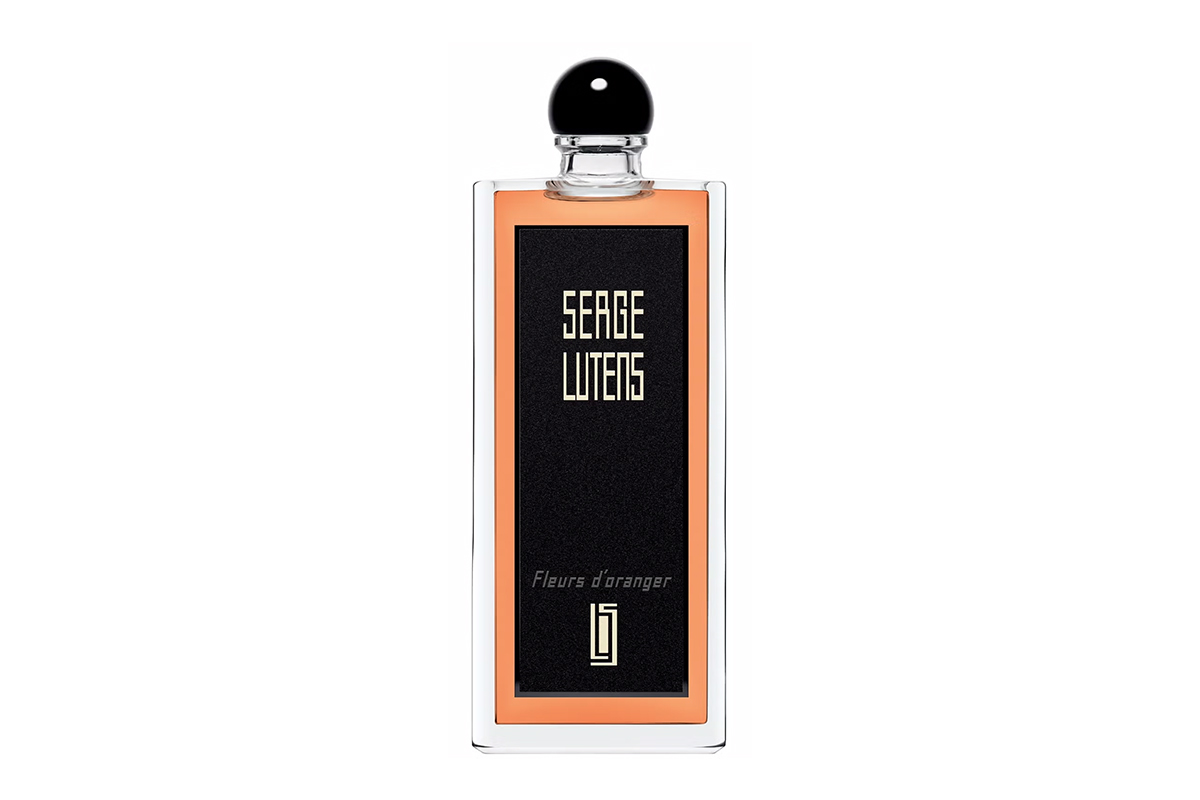 Serge Lutens - Fleurs d’Oranger
Serge Lutens - Fleurs d’Oranger
Serge Lutens is renowned for using unique floral ingredients, and Fleurs d’Oranger masterfully highlights Osmanthus alongside orange blossom. Here, Osmanthus lends a fruity and slightly leathery softness, enriching the floral heart and making the perfume both fresh and intriguingly complex.
Top Notes: Orange blossom, Osmanthus
Heart Notes: Jasmine, Tuberose, White Rose
Base Notes: Floral Musk, Hibiscus, Cumin
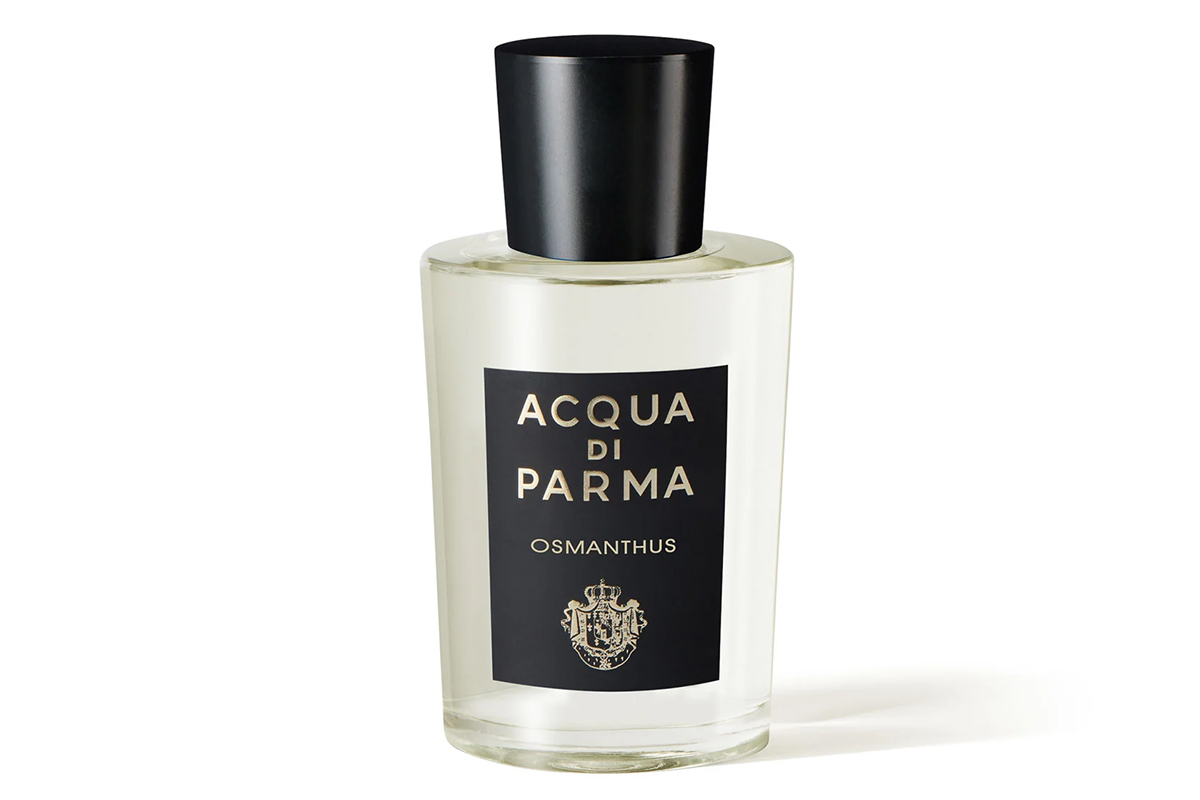 Acqua di Parma - Osmanthus (Colonia Collection)
Acqua di Parma - Osmanthus (Colonia Collection)
Part of Acqua di Parma’s Colonia collection, this fragrance incorporates Osmanthus to add a subtle fruity and floral nuance that complements the classic citrus and herbal accords. It’s a refined and elegant scent, reflecting Mediterranean sophistication with an exotic twist.
Top Notes: Neroli, Green Mandarin
Heart Notes: Peony, Ambrette, Pink Pepper
Base Notes: Osmanthus, Patchouli
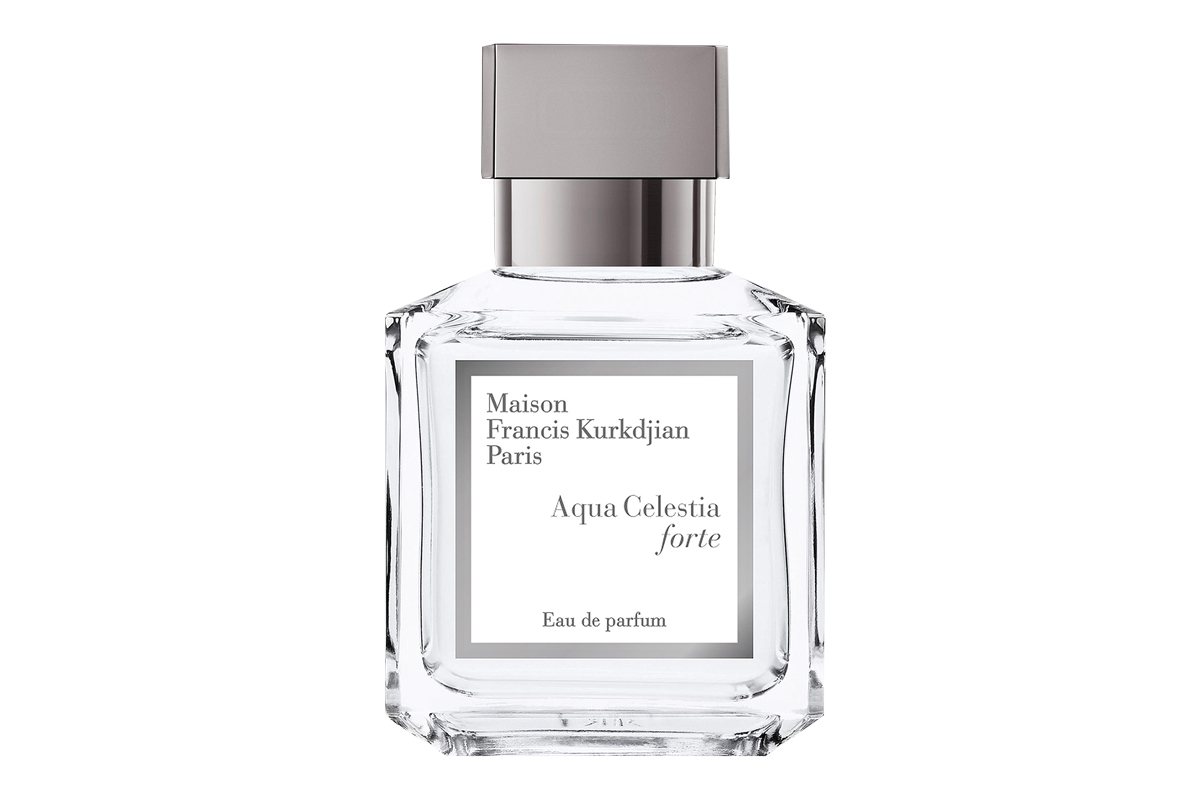 Maison Francis Kurkdjian - Aqua Celestia Forte
Maison Francis Kurkdjian - Aqua Celestia Forte
While Osmanthus isn’t officially listed, the fragrance unveils a luminous floral heart with an apricot-like nuance, lending gentle sweetness to the zesty citrus-mint opening and softening the radiant, musky floral trail.
Top Notes: Lime, Petitgrain, Lemon, Mint
Heart Notes: Black Currant Blossom, Jasmine, Hedione, Mimosa, Lily-of-the-Valley
Base Notes: Musk
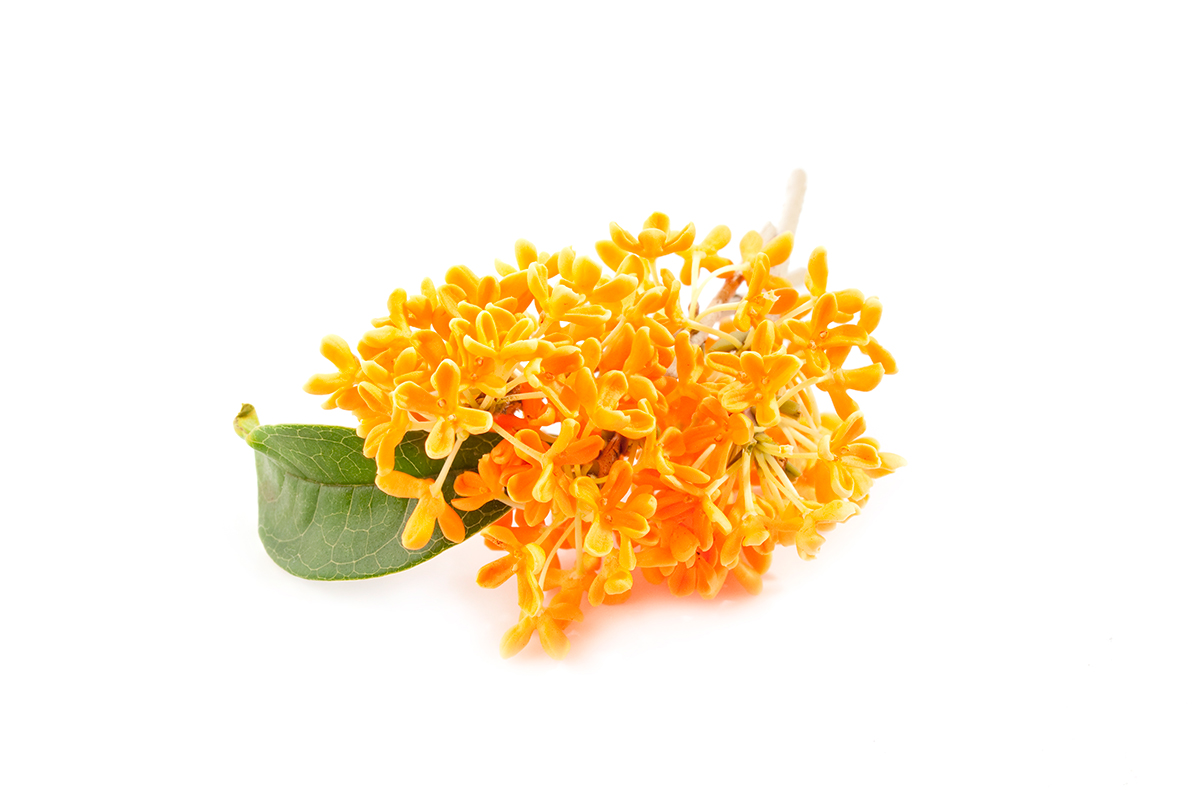 Osmanthus Beyond Traditional Perfumery
Osmanthus Beyond Traditional Perfumery
Beyond its use in classic and niche perfumes, Osmanthus is increasingly appreciated in new olfactory trends:
Sustainable Sourcing and Natural Extraction: As the perfume industry becomes more environmentally conscious, Osmanthus’s cultivation has adapted to sustainable farming practices in China and Japan, ensuring that its delicate flowers can be harvested without harming wild populations.
Biotech Innovation: Some fragrance houses are exploring biotechnology to replicate Osmanthus’s scent molecules sustainably, allowing for wider use without overharvesting natural resources.
Gourmand and Fruity Fragrance Trends: Osmanthus fits perfectly into the rising trend of fruity-floral scents that balance sweetness with elegance, appealing to younger consumers who favour approachable yet sophisticated perfumes.
Osmanthus’s delicate flowers may be tiny, but their impact on the perfume world is mighty. Its ability to weave fruity sweetness with floral elegance and a whisper of leather makes it a truly versatile and exotic ingredient, one that invites wearers on a sensory journey from the ancient gardens of East Asia to the contemporary perfume collections on boutique shelves worldwide.
As perfumery continues to evolve, Osmanthus remains a beloved ingredient, bridging tradition and innovation, nature and luxury. For fragrance aficionados and creators alike, Osmanthus offers a timeless olfactory jewel, a scent of autumn blossoms that lingers in memory long after the last note fades.
Read this post in
 Arabic
Arabic


